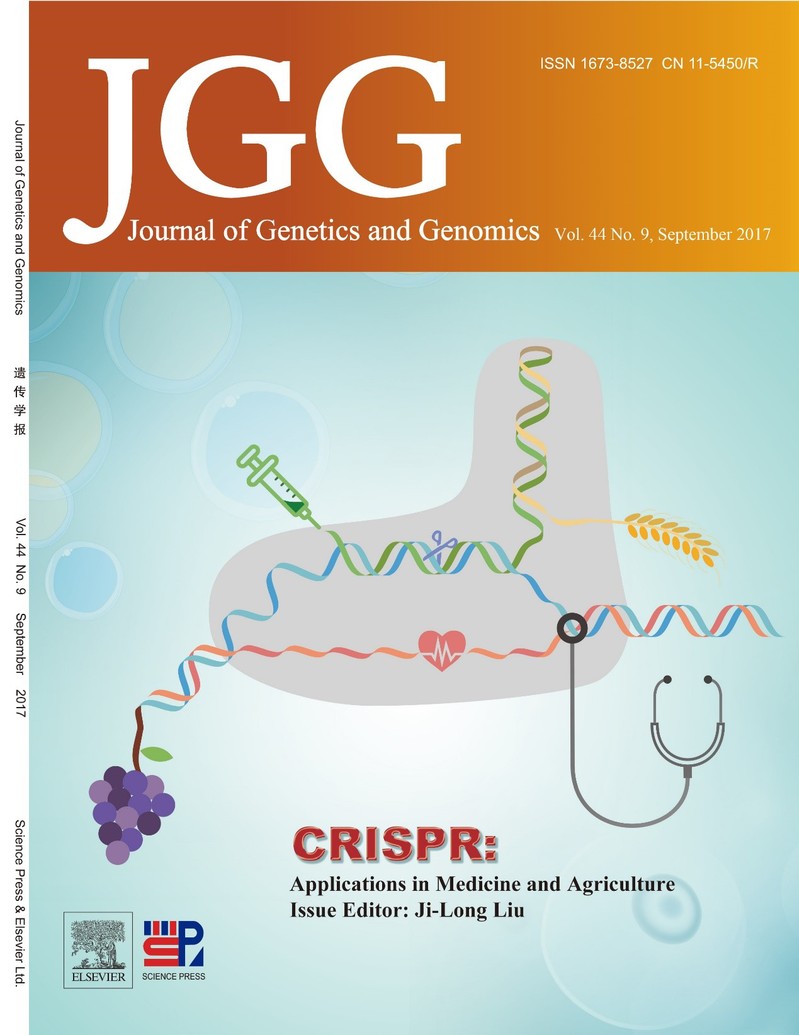Professor Ji-Long Liu from ShanghaiTech University’s School of Life Science and Technology (SLST) was invited to edit the Journal of Genetics and Genomics (JGG) Special Issue on CRISPR. JGG, formerly known as Acta Genetica Sinica, is an international journal publishing peer-reviewed articles of novel and significant discoveries in the fields of genetics and genomics.
CRISPR stands for Clustered Regularly Interspaced Short Palindromic Repeats. The unusual DNA segments were discovered in bacteria exactly 30 years ago. After two decades, the CRISPR and its associated protein was proved to act as an immunity system in bacteria. In 2012, the CRISPR/Cas system was successfully applied in gene targeting by bring RNA, protein and DNA into the same locus. This milestone work triggered the “CRISPR explosion” for genome engineering in almost all species. The JGG special issue is focusing on the applications of CRISPR in two important areas: medicine and agriculture. Professor Liu wrote an editorial entitled, “Sparks of the CRISPR explosion: Applications in Medicine and Agriculture”.
In this issue, two review articles were contributed by groups at ShanghaiTech University. In the first review article, Assistant Professor Jia Chen from SLST and Dr. Bei Yang from Shanghai Institute for Advanced Immunochemical Studies (SIAIS), together with their group members Xiaosa Li and Liqun Lei, summarize the physiological functions and structural features of APOBECs, a family of cytidine deaminases. They discussed the coupling of APOBECs and CRISPR for an improved gene-editing technique at single-base precision. The other timely review article on designing and performing a CRISPR-Cas9 based genetic screen was written by Assistant Professor Haopeng Wang and his students Wanjing Shang and Fei Wang, together with Assistant Professor Gaofeng Fan, all four of them are from SLST. They summarized recent development of the CRISPR technology in genetic screening and provided the guidance for experimental design, potential application and future direction of CRISPR-Cas9 based genetic screens.
The cover of the JGG Special Issue was designed by Hongqing Tu, an undergraduate student in SLST. In the cover image, three essential components of the CRISPR/Cas system (the guide RNA, the Cas protein and the targeted DNA) were elegantly tagged with elements in medicine (a syringe, a stethoscope and an electrocardiogram) and in agriculture (grapes and ears of wheat).
SLST seeks scientific breakthroughs in major fields of life science and technology. SLST enjoys extensive collaborations with life science research institutes at CAS and with R&D centers of leading pharmaceutical companies in Shanghai. Its education programs and research projects are designed to address fundamental questions at the cutting-edge of life science and technology. The School advocates an interdisciplinary approach and emphasizes the integration of basic and applied research. SIAIS, a close partner of SLST, focuses on elucidating the most fundamental problems in life science research, particularly in immunochemistry.
JGG Link:
JGG Special Issue Link:
http://www.sciencedirect.com/science/journal/16738527/44/9
Chen Lab:
http://slst.shanghaitech.edu.cn/2017/0704/c305a2221/page.htm
Fan Lab:
http://slst.shanghaitech.edu.cn/2017/0704/c305a2222/page.htm
Liu Lab:
http://slst.shanghaitech.edu.cn/2017/0704/c301a2182/page.htm
Wang Lab:
http://slst.shanghaitech.edu.cn/2017/0704/c305a2236/page.htm



